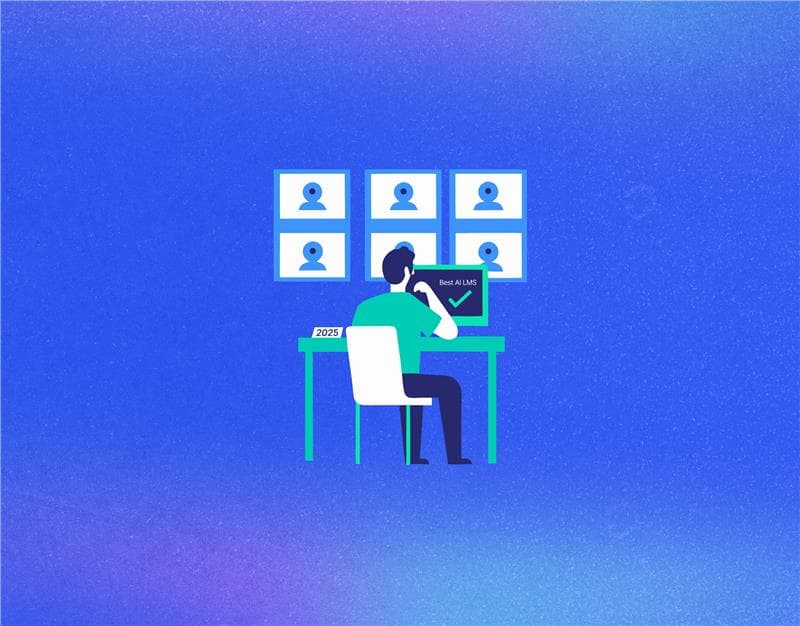Published October 30, 2023
Crafting Effective Courses: A Comprehensive Guide for Educators
In the world of online learning, having a well-structured course is a must. Think of it like having a roadmap. It helps both teachers and students know where they're going. This clarity enables instructors to teach effectively and helps students to understand what to expect. This structure also reduces the chances of learners feeling overwhelmed or lost in a sea of information. Having a structured course design means that the way content is delivered remains consistent. When instructors stick to a planned approach, students can count on a reliable learning experience. This uniformity in how the course is organized and the content is presented is essential to keep students engaged.
Creating an engaging and effective online course is a blend of art and science. As educators and instructional designers, we strive to deliver a seamless learning experience that resonates with our audience and imparts knowledge effectively. To achieve this, let's delve into some essential guidelines that will help you in creating a course that stands out.
1. Understanding Your Audience
Before you start creating your course, it's crucial to know your audience. Who are they, what do they want to learn, and how do they like to learn? To do this, you need to do some research and build a detailed picture of the typical learner, which is called a "learner persona." This helps you design your course so that it speaks directly to the people you want to teach, making it more effective and engaging. It's like making a customized road map to ensure your course suits the unique needs and goals of your learners.
2. Define Clear Learning Objectives
Setting clear and measurable learning goals is like drawing a roadmap for your course. These goals help both teachers and students know where they're headed. They define what students should be able to do after completing the course, giving everyone a clear target. When you create the course content, you make sure it all fits with these goals, making the learning experience organized and purposeful. For students, these goals give a sense of direction and motivation because they know what they'll achieve by the end. These objectives also help assess progress and check if the course is achieving its intended outcomes. So, in education, clear and measurable learning objectives are like the guiding stars that make the learning journey meaningful and effective.
3. Choosing The Right LMS
Selecting the right Learning Management System (LMS) is a critical decision for educational institutions and businesses alike. A good LMS should be like a supportive, versatile mentor in the digital learning journey. It should offer a user-friendly interface, intuitive navigation, and a well-organized structure. It's not just about managing courses; it's about engaging and tracking learners. A good LMS should provide robust features for content creation, assessment, and analytics, allowing educators to tailor their materials to learners' needs and measure progress effectively. Furthermore, flexibility and scalability are vital; a good LMS can adapt to your specific requirements as your organization or institution grows. It should be accessible from various devices and integrate seamlessly with other tools and platforms. Ultimately, a good LMS empowers learners and educators, making the learning process efficient, engaging, and data-driven.
4. Leverage Multimedia and Interactive Elements
Integrating a diverse range of multimedia elements, including videos, infographics, quizzes, and interactive exercises, is a dynamic strategy to elevate learner engagement and understanding. Visual and interactive content captivates students, making the learning experience not only more enjoyable but also more effective. It breaks down complex concepts, encourages active participation, and ensures that learners remain intrigued and involved throughout the course, ultimately leading to enhanced comprehension and retention of the material. This multifaceted approach breathes life into online education, offering a richer and more immersive learning experience that paves the way for academic success.
Recommended Video Duration: Keeping it Digestible
When you're using videos in your course, try to keep them short, around 5 to 10 minutes for each topic or idea. Shorter videos are easier for learners to understand, and they're more likely to stay engaged throughout the course. By keeping things brief and focused, you create a better learning experience, making it easier for students to absorb and remember the information, which is important for successful online education.
5. Structured and Organized Content
Organizing your course content with a logical and structured approach is the cornerstone of effective online teaching. By employing modules, units, or chapters, you break down the course into manageable sections, allowing learners to navigate and digest the material with ease. This clear structure not only simplifies the learning journey but also enhances comprehension. It acts as a roadmap, providing learners with a clear direction, which is especially important in the digital learning environment. With well-defined sections, learners can focus on mastering one aspect before progressing to the next, creating a sense of accomplishment and maintaining their motivation. In this organized framework, knowledge flows seamlessly, making for a more engaging and fruitful learning experience.
6. Regular Course Updates for Relevance
Keeping your course content up-to-date is really important. Technology and what we know change quickly. So, when you regularly update your course materials, you make sure your learners are getting the most current and relevant information. It's like keeping a book with the latest news - it's more useful and valuable. By doing this, you show that you care about your learners and want them to have the best learning experience. In a world where things change fast, staying up-to-date in your course is like giving your learners a strong foundation for the challenges they'll face.
7. Regular Assessments and Feedback Loops
In online learning, it's important to use quizzes, assignments, or tests to see how well students are doing and what they understand. These help teachers keep track of progress. But it's not just about checking; it's also about listening. Gathering feedback from students is like having a conversation. It helps teachers make the course better. This two-way communication makes learning more effective and keeps the course in sync with what students need. So, by using assessments and listening to students, educators can create a learning environment that's always improving and giving students the best experience.
8. Promote Social Learning and Collaboration
Integrate discussion forums, group activities, or peer assessments to encourage interaction and collaboration among learners. Social learning enriches the learning experience and provides diverse perspectives. Adding cohorts to an online learning environment can be a game-changer. Cohorts, essentially groups of learners who progress through a course together, bring a sense of community and shared experience to digital education. The benefits are manifold: they encourage peer interaction and collaboration, fostering a supportive learning environment. Cohorts enable structured discussions, group projects, and collective problem-solving, enhancing the depth of learning. Moreover, they provide a clear framework for learners, helping them pace themselves, stay motivated, and complete the course successfully. Cohorts, with their sense of belonging, can reduce dropout rates and improve engagement. Instructors can also efficiently manage and tailor content delivery for these groups, making online learning not just about gaining knowledge but about building meaningful connections and teamwork.
9. Optimize for Mobile Learning
In today's fast-paced world, it's essential to make sure your online course works well on mobile devices. People use smartphones and tablets for learning, and having a course that's mobile-friendly means they can study whenever and wherever it's convenient for them. This isn't just about convenience; it's about recognizing that learners have busy lives and need flexibility. Making your course mobile-friendly empowers them to learn on their terms, which can boost their engagement and overall success.
10. Data Analytics for Continuous Improvement
Leveraging data analytics to monitor learner progress, identify engagement patterns, and assess course effectiveness is a transformative step in education. The insights gained from this data provide a window into the learning journey, allowing educators to make informed, data-driven decisions. By understanding how students are interacting with the course material, where they excel, and where they might need extra support, educators can tailor their teaching methods to suit individual needs. This personalized approach not only improves the learning experience but also contributes to better overall outcomes. It's a powerful tool that allows us to adapt, innovate, and ultimately empower students to achieve their full potential.
By adhering to these guidelines, you can create a course that not only meets the educational objectives but also engages and empowers learners. Creating a well-structured online course is a powerful endeavor. It's about more than just delivering information; it's about shaping the future of learning. When you meticulously plan and outline your course, you're not only offering knowledge but a guided journey towards empowerment. Your structured course becomes a roadmap for learners, a reliable path to gaining new skills and insights. It's a canvas where you can paint a rich tapestry of experiences, fostering understanding, and sparking curiosity. The satisfaction of seeing your students' progress through a well-organized curriculum, engaged and informed, is a motivation like no other. You're not just teaching; you're sculpting the next generation of thinkers and doers. In the realm of online education, your structured course is not just a creation; it's an inspiration, a beacon that guides learners toward their goals and potential. Happy course creation!



